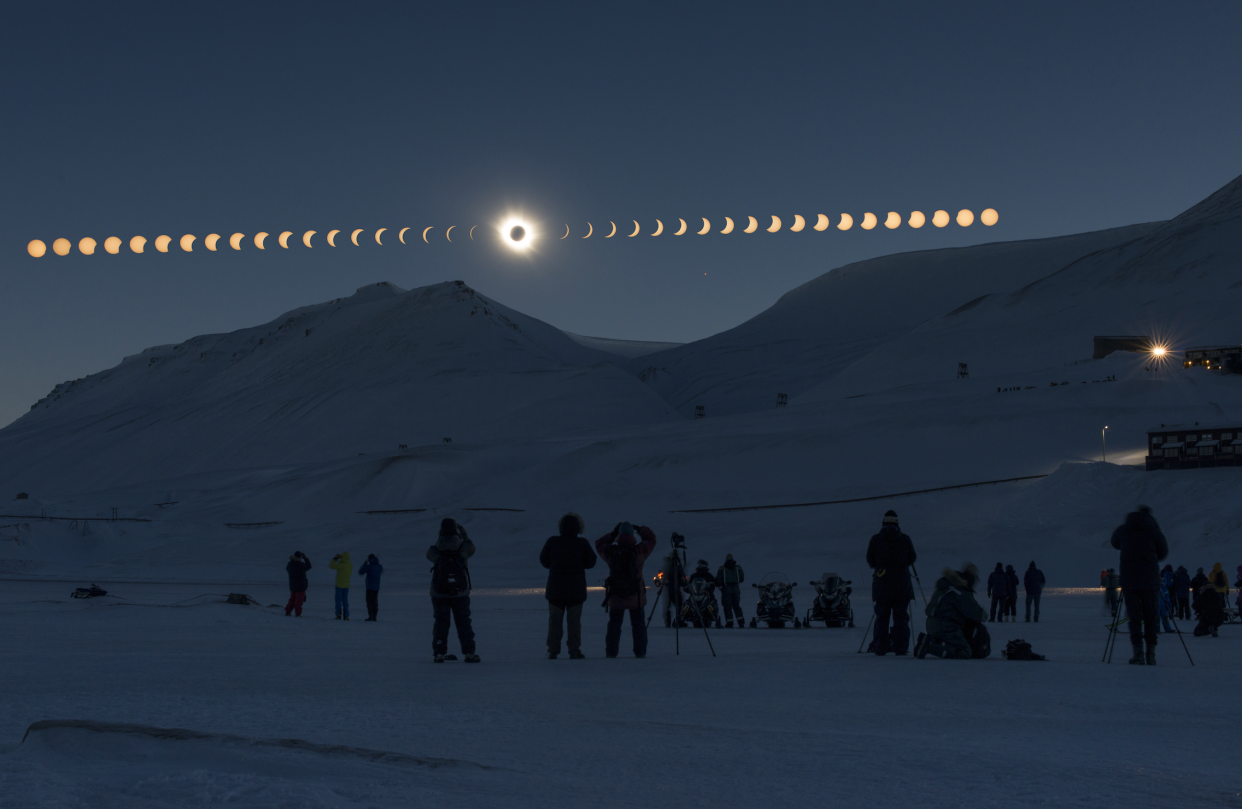April's solar eclipse gives educators opportunities to shape tomorrow's space enthusiasts
On April 8, much of Upstate New York will be treated to a total solar eclipse. For several minutes the moon will completely block the sun, darkening the skies in the middle of the afternoon.
Most municipalities within the Mohawk Valley will experience 99% visibility of the celestial event, meaning the sky will significantly dim.
Rome is unique in that the northern part of the city falls within the path of totality while the southern tier does not.
On the other hand, Old Forge lies directly within the path of totality and will observe darkness for three minutes.
SPACE Talks
Utica University teamed up with the Adirondack Total Solar Eclipse Celebration in Old Forge. Two physics professors – Hava Turkakin and Brandon Flemming – will present SPACE Talks at the Strand Theater April 6-7, a spin-off of TED talks.
Event organizer, Ximena Gardner, said the lectures will focus on more than just the sun, moon, and Earth coming into alignment. They'll examine "what eclipses have meant for humanity throughout time."
“Wars have started and ended because of celestial events,” explained Gardner. “While the science is neat and worthy of acknowledgment, so are the cultural implications.”
Eclipse Education
Professor Flemming noted the importance of "eclipse education."
“When we take the time to understand how a solar eclipse occurs we come into deeper knowing of our own place within the solar system, and the universe at large," Flemming said. "One of the greatest questions we can ask is, 'Why?' That is the first step in critical learning.”
As April draws near, the eclipse will permeate collegiate conversations as well as K-12 science curriculum.
The Oneida-Herkimer-Madison (OHM) BOCES Science Center has joined forces with local districts to prepare students for the phenomenon.
“The eclipse is a great chance to evoke wonder and educate our youth,” said Jennifer Parzych, OHM BOCES supervisor of Instructional Support Services.
An "en masse science experiment"
On April 6 at 1:30 p.m., Turtakin will host the inaugural SPACE Talk. Her presentation will examine how the relationship, between mankind and the solar system, has affected different cultures historically.
On April 7 at 4 p.m., Flemming will take center stage to discuss how the moon first formed, moon-Earth interactions, and the science behind an eclipse.
“Each year there are between two to five solar eclipses,” Flemming said. “The width of each path is roughly 100 miles, making the ‘path of totality’ a relatively rare occurrence. The last eclipse to happen over Old Forge was in 1995.”

While it’s true that if someone comes between you and the sun at the beach that’s a solar eclipse Flemming said, like much of astronomy, the event can't be properly understood at face value.
“Events like these matter because they are so easily accessible and help to foster curiosity about the clock-like behavior of our universe,” Flemming continued. “Eclipses provide the public an opportunity to participate en masse in a science experiment on an astronomical scale.”
Turkakin agreed.
“Knowing about how celestial forces interact is an eye-opening experience," Turkakin said. "A solar eclipse is an incredible opportunity to turn people's attention to the intricate balance that provides us with life and comfort on Earth.”
Safety first
According to Gardner, the SPACE Talks were scheduled before the eclipse on purpose.
“Our intention is for eclipse-watchers to make a weekend of the event, as opposed to getting stuck in traffic on Monday,” she said.
On April 8, students and faculty from Utica University will be present at the George T. Hiltebrant Recreation Center to answer questions visitors have. They will also hook up two telescopes with solar filters to a large screen for mass viewing.
“Safety comes first,” Flemming emphasized. “Looking at the sun without any protection can cause instant blindness or permanent eye damage.”
And, simple UV sunglasses won’t suffice, Turkakin warned.
“The telescope will capture the point of totality when the sky completely darkens and the sun’s outer atmosphere will appear as a ring of light, called a corona,” she said.
K-12 participation
The OHM BOCES serves 12 component school districts: Brookfield, Clinton, Holland Patent, New Hartford, New York Mills, Oriskany, Remson, Sauquoit Valley, Utica, Waterville, Westmoreland, and Whitesboro.
Parzych acknowledged the point of totality will align with the end of most districts' school day.
“The OHM BOCES Safety Service is working to solidify a plan where students can observe the eclipse,” she said.
The OHM BOCES Science Center will also offer science kits and digital resources, aligned with state learning standards, to educate students on the celestial occurrence.
Parzych noted that state learning standards already include celestial themes, performance levels 1-5 are taught about the cyclical phases of the moon, eclipses, tides and seasons.
Nonetheless, the OHM BOCES Science Professional Learning Community – a team of science educators who share ideas to enhance their teaching practices – will discuss eclipse-specific activities at their upcoming meeting, she said.
Portable Planetarium
Additionally, the Science Center and the OHM BOCES Portable Planetarium will participate in local solar eclipse events.
The Portable Planetarium is a handicapped-accessible dome made from industrial-grade fabric. The inner surface has an aluminized reflective coating designed to display bright images, explained Parzaych.
On April 6, the Portable Planetarium will be at The View Arts Center in Old Forge from 11 a.m. to 4 p.m. for the Adirondack Total Solar Eclipse Celebration. The Portable Planetarium will be set up alongside workshops and events for children of all ages.
On April 8, the Science Center and Portable Planetarium will participate in the Indian River Central School District’s community solar eclipse event.
Turkakin applauded the efforts of local schools, hopping on board the eclipse education bandwagon.
“To kindle the interest of learning space science among the public and especially young generations is essential,” she said.
This article originally appeared on Observer-Dispatch: Eclipse 2024 New York: Education will shape next space enthusiasts
